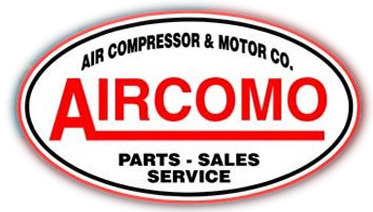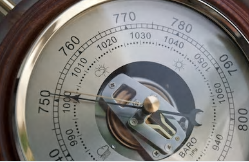We live in a world surrounded by air. This air is pressing down on our bodies at 14.7 pounds per square inch at sea level. Think of a column of air to the top of the atmosphere sitting on your heads, the weight of this air column is causing this atmospheric pressure. On high mountains it is less and generally at sea level in Florida it is about 14.7 PSI. This pressure is shown as PSI or atmospheric pressure
Air compressors take this atmospheric air pressure and raise it to a useful higher pressure. This is determined by the requirement of the compressed air user and the air compressor. This pressure is gauge pressure or PSIg. This is PSIa plus the compressor gauge pressure. Most applications only refer to the gauge pressure.
Pressure is stated as PSIa for atmospheric pressure and PSIg for gauge pressure.
Air contains moisture (Relative Humidity) and has a temperature, as a result, the higher the air temperature, the higher the potential for moisture in the air. Any cooling will cause water to form. All these facts affect the output of an air compressor
Air volume expands with an increase in temperature and when compressed it can store potential energy in an air receiver or tank as well as increased heat and humidity, in general, the bigger the air receiver, the better. The old rule of 1 Gallon storage for each CFM of compressor capacity is short sited and a better rule is 3 to 5 gallons per system CFM. Thus, since the air compressor has increased the air temperature and pressure by compression, any expansion or use will be cooling and could allow water to condense. When the humidity is high this can be considerable.
Air compressors are usually rated in FREE AIR stated in CFM and PSI with a specific HP motor. Most motors on air compressors are operating in the motor service factor or at a larger HP than the stated motor nameplate and this can be an increase of 15 to 30%.
Lowering the pressure in a system will reduce the required amount of air but will not change the FAD.
TYPES OF AIR COMPRESSORS
The 5 HP two stage, air cooled piston compressor is the basic building block. It is not unusual to find several 5 HP machines operating together as they offer immediate back up and they are easy to operate and maintain. These machines may operate on either single or three phase power and deliver 15 nominal CFM at 175 PSI.
7 ½ HP is the largest industrial single phase machine available. Rotary screw machines may also be available in this size ranges and are designed to operate continuously while air cooled piston compressors have a 70% maximum duty cycle.
10 HP piston machines are still available but rotary screw compressors are taking hold because of space, duty cycle, and noise. These machines are more expensive to buy and service. Recently a 10 HP single phase rotary screw compressor has been developed.
15 HP and up to 400 HP Rotary screw compressors dominate the market. These can be air or water cooled. Certain models can be oil free. That means the rotors are supported by timing gears and do not touch each other.
DEFINITIONS
* ABSOLUTE PRESSURE- The total pressure from a barometer measured in pounds per square inch.
* ACFM – Actual cubic feet per minute and should be expressed at pressure and temperature.
* AMBIENT – Temperature and barometric conditions in area considered.
* ASME- standards applicable to the design, fabrication and testing of pressure vessels set by the American Society of Mechanical Engineers.
* ATMOSPHERIC DEW POINT – Temperature at which moisture begins to condense.
* BAROMETRIC PRESSURE – Absolute pressure at point of use.
* CAPACITY – Does the work, pressure only affects the speed of the work.
* CFM – Cubic feet per minute.
* COMPRESSION RATIO – Ratio of system pressure to atmospheric pressure.
* DEW POINT – Method of expressing moisture content of air.
* DISCHARGE PRESSURE – Total gauge pressure measured at the discharge of the compressor.
* FROW RATE – Expressed as actual CFM (Usually) or standard CFM.
* FREE AIR – Actual quantity of air at atmospheric conditions at any specific location.
* GAUGE PRESSURE – Pressure reading from gauge.
* ICFM – Inlet CFM, the difference between ACFN and ICFM is the volumetric efficiency of the compressor.
* HP – Horsepower power required to operate compressor.
* KILOWATT – The HP times .7457.
* PRESSURE – Force per unit area, pounds per square inch PSI.
* STANDARD AIR – Air at 14.5 PSIa, 68 F and 0% relative humidity (this is one standard but there are others).


